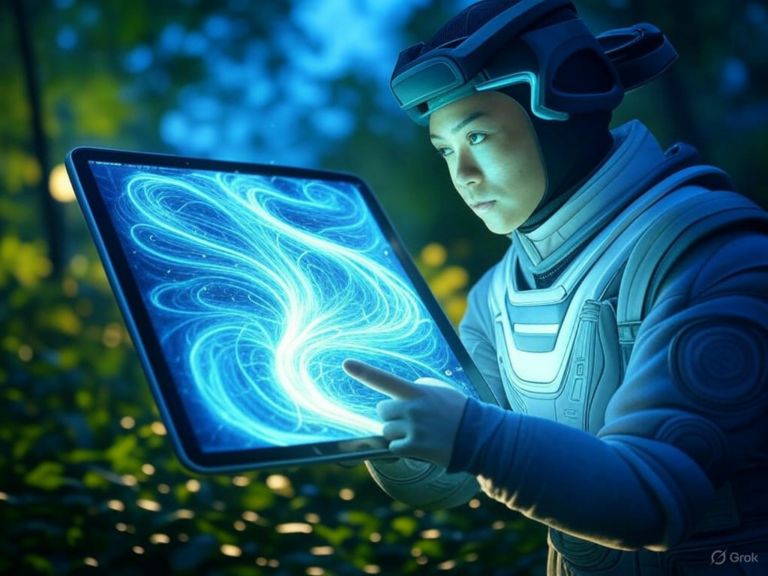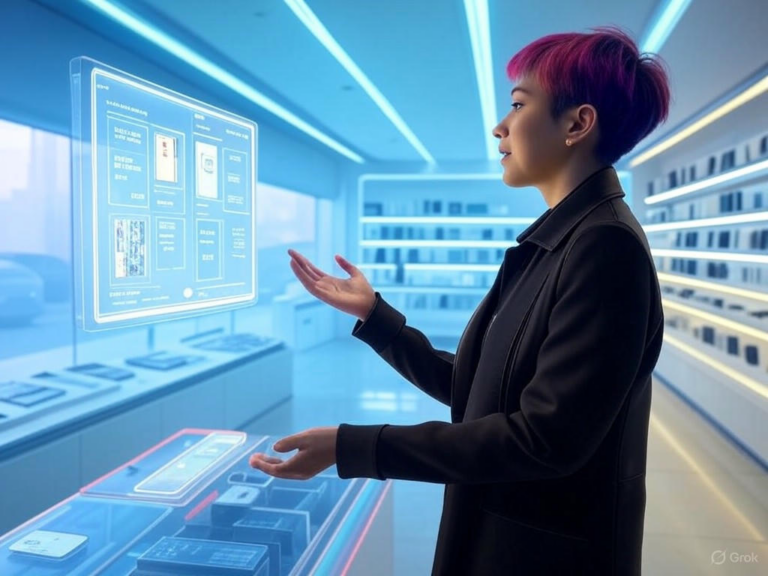
Britannica AI Tools Revolutionize Modern Education Publishing
The Dawn of AI in Educational Publishing
Imagine a world where learning adapts to you, not the other way around. That’s the reality Britannica AI is ushering in, reshaping how we access and interact with knowledge in today’s fast-paced education landscape. By harnessing advanced AI-powered tools, Britannica is accelerating content creation, tailoring experiences to individual needs, and delivering reliable resources that evolve with global changes. This shift isn’t just about technology—it’s about making education more dynamic and inclusive for students and teachers alike.
For years, educational publishing relied on static books and updates that couldn’t keep up with the world. Now, Britannica AI changes that by integrating artificial intelligence to curate and deliver information in real time, drawing from vast databases to support lifelong learning. Have you ever wondered how a simple search could spark deeper curiosity? That’s the power of these tools in action.
Why Britannica Embraced Artificial Intelligence
From its roots in hefty print encyclopedias, Britannica has evolved into a digital powerhouse, and Britannica AI is at the heart of this transformation. The company recognized that traditional methods couldn’t match the speed of modern information flow, so they turned to AI to make knowledge more responsive and user-centered. This move reflects a growing trend in publishing, where AI helps bridge gaps in education by providing nuanced, real-time insights.
Think about it: In a classroom, teachers need materials that adapt to current events, like climate changes or tech advancements. Britannica AI ensures that happens, turning static content into a living resource. By analyzing global data, it supports educators in creating more effective lesson plans, all while maintaining the trust Britannica has built over centuries.
Key Applications of Britannica AI Tools
Britannica AI tools are making waves by tackling everyday challenges in education, from content updates to personalized support. These applications streamline processes, ensuring that learning materials are not only accurate but also engaging for diverse audiences. Let’s break down how they’re changing the game.
- Automated Content Generation and Updates: In a world of constant change, Britannica AI scans news, research, and data to suggest timely revisions, keeping educational content fresh and relevant. For instance, if a new scientific discovery emerges, the system can flag it for quick integration, saving educators hours of manual work.
- Personalized Learning Experiences: Ever feel overwhelmed by generic textbooks? Britannica AI analyzes user habits and preferences to recommend tailored content, turning study sessions into personalized adventures that boost retention and interest.
- Enhanced Accessibility and Inclusivity: AI isn’t just about efficiency—it’s about equity. Britannica AI adapts materials for different learning styles, such as providing audio options for visually impaired students or simplifying text for non-native speakers, fostering a more inclusive environment.
- Reliable Fact-Checking: With misinformation rampant online, Britannica AI strengthens editorial processes by cross-verifying facts against trusted sources, ensuring the information you rely on is solid and trustworthy.
ASK Britannica: The AI-Powered Learning Companion
At the forefront of Britannica AI innovations is ASK Britannica, a smart assistant that’s like having a knowledgeable guide in your pocket. This tool lets users ask questions in everyday language and get precise answers pulled from Britannica’s reliable database, making research feel intuitive and fun.
It’s more than just a search engine; ASK Britannica encourages exploration by suggesting related questions, helping users dive deeper into topics. For example, if you’re studying history, it might prompt follow-ups that connect events to modern issues, sparking critical thinking.
How Britannica AI Powers ASK Britannica
- Uses cutting-edge natural language processing to understand and respond to queries like a conversation.
- Pulls answers solely from Britannica’s vetted resources, ensuring accuracy and depth.
- Provides citations and links for easy verification, empowering users to build on what they learn.
- Offers guided suggestions for related topics, turning a single question into a full learning journey.
Impact of AI on Content Creation and Curriculum Alignment
Britannica AI is revolutionizing how educational content is developed, making it faster and more aligned with real-world needs. These tools automate workflows, allowing publishers to focus on creativity rather than routine tasks, and they ensure materials meet diverse curriculum standards.
One key benefit is how AI speeds up updates for subjects like science or history, where facts evolve quickly. Educators can now access resources that are not only current but also customized to their classroom’s requirements.
- Efficient Content Authoring: AI automates drafting and editing, cutting down publication times for new materials and letting creators innovate.
- Multi-language Translation: With AI handling translations, content becomes globally accessible while preserving cultural nuances, breaking down language barriers for international learners.
- Curriculum Compliance: Tools check and align content with regional standards, helping schools stay compliant without extra effort.
Traditional vs. Britannica AI-Driven Publishing: A Quick Comparison
To see the difference, here’s a simple breakdown that highlights how Britannica AI elevates the process:
| Feature | Traditional Publishing | AI-Driven Publishing |
|---|---|---|
| Content Update Speed | Slow, manual revisions that lag behind events | Real-time, automated updates for instant relevance |
| Personalization | One-size-fits-all approach | Tailored to individual user needs for better engagement |
| Assessment & Feedback | Time-consuming manual grading | Interactive, real-time feedback that supports growth |
| Accessibility | Limited to standard formats | Adaptive and multilingual for broader reach |
Britannica AI’s Personalization: A New Learning Paradigm
Personalization is where Britannica AI truly shines, shifting education from rigid structures to flexible, adaptive paths. By tracking progress and preferences, it crafts custom learning experiences that feel personal and effective, much like a tutor who knows you inside out.
This approach isn’t just innovative—it’s practical. For students struggling with a topic, AI can suggest simplified explanations or interactive exercises to build confidence.
Benefits for Educators and Institutions with Britannica AI
- Time Savings: Automate routine tasks like grading, freeing teachers to focus on mentoring and inspiration.
- Data-Driven Insights: Analyze student performance to refine curricula, helping schools make informed decisions.
- Resource Alignment: Instantly access up-to-date materials that match educational goals, enhancing teaching efficiency.
Britannica’s Responsible Approach to AI in Education
While excitement around AI grows, Britannica is leading with responsibility, ensuring their tools support educators without overshadowing them. Britannica AI emphasizes transparency, like clearly citing sources to combat misinformation and build trust.
This balanced strategy means AI acts as a helper, not a replacement, allowing teachers to guide discussions while tech handles the heavy lifting. What if every tool in education prioritized ethics like this?
Challenges and Future Directions
Of course, integrating Britannica AI isn’t without hurdles, such as safeguarding privacy and ensuring fairness for all users. The company is actively addressing these by gathering feedback and collaborating with experts to refine their tools.
Looking ahead, we might see even smarter features, like AI-generated lesson plans or virtual reality companions. How could these advancements reshape your learning experience?
Conclusion: AI’s Transformative Role in Modern Publishing
In summary, Britannica AI is paving the way for a more innovative, inclusive future in education, where personalized tools empower learners and educators alike. By blending cutting-edge technology with a commitment to accuracy, it’s not just revolutionizing publishing—it’s inspiring a new generation of curious minds.
If you’re an educator or student, why not try these tools and see the difference for yourself? Share your thoughts in the comments below, explore more on our site, or check out related resources to dive deeper.
References
- Britannica Education. “AI in Education.” britannicaeducation.com/blog/ai-in-education/
- Britannica. “About Britannica AI.” www.britannica.com/about-britannica-ai
- eLearn EB. “Introducing ASK Britannica.” elearn.eb.com/introducing-ask-britannica/
- AI Plus Info. “Britannica Embraces AI Tools for Knowledge Evolution.” www.aiplusinfo.com/blog/britannica-embraces-ai-tools-for-knowledge-evolution/
- The New Publishing Standard. “From Hefty Print Volumes to Full-On AI.” thenewpublishingstandard.com/2025/01/28/from-hefty-print-volumes-to-full-on-ai…
- Get MagicBox. “AI in Educational Publishing.” www.getmagicbox.com/blog/ai-in-educational-publishing-your-key-to-accelerating-and-enhancing-content-creation/
- Hypotenuse AI. “AI Writer.” www.hypotenuse.ai/ai-writer
- eLearn EB. “AI Drive Inclusive Learning.” elearn.eb.com/ai-drive-inclusive-learning/
Britannica AI, educational publishing, AI in education, personalized learning, AI tools, Britannica tools, modern education, learning companions, content creation, curriculum alignment







